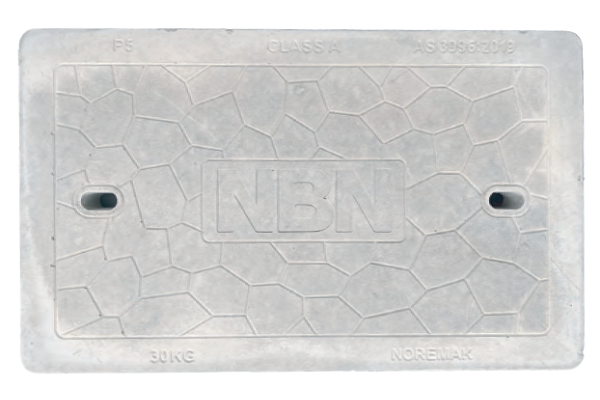Bringing lid standards out of the pits
The NBN has updated its pit lid requirements to ensure compatibility and traceability. Sean Carroll finds out more.
The NBN has released a new version of the standard surrounding the deployment of the NBN pit and conduit network, re-emphasising the importance of labelling among other measures.
ADVERTISEMENT
The change comes in an attempt to compel manufacturers to comply with Australian Standards, especially when it came to the manufacturer’s name. If an incident were to occur, there would be no traceability to the manufacturer.
“There was no major change to the standard as such, NBN has always stated that the lids must be Class A but the roll-out of the network led to an enormous demand for these new pit lids,” Noremak Industries managing director Cameron Redfern says.
“Like with most circumstances, including this one, some manufacturers saw an opportunity to capitalise where possible without meeting the requirements and some were made without the appropriate labelling or in some circumstances even meeting the basic Australian Standards.”
He says that the major issue was the manufacturer’s name. While most pit lids came with the correct NBN logo and the Class A markings, the lack of a manufacturer name or identifiable logo made it impossible to trace where that lid came from, a key component of the standard.
This recent change and clarification suggest that the telecommunications company is looking to enforce the rules on non-compliant lids.
“This requirement isn’t just NBN. All lids, from Class A up to Class D, from a pit in a foot path or in an airport, the lid or cover needs to include the manufacturer’s name,” Cameron outlines.
This clarification of requirements in the NBN standard, NBN-TE-CTO-194 Revision 11, was made to meet the Australian Standard for lids in full. The below requirements have been added and are in effect now.
- The manufacturers name or trademark
- The number of the Australian Standard the lid conforms to
- Load classification as example A
- The weight of the lid
- The NBN logo to their requirements
The reminder also touches on some of the other requirements for the fittings including having no exposed sharp edges and determining that they should be made out of concrete, weighing no more than 38kg each.
Each lid needs a lifting tool hole at each end that’s capable of being used with an industry-accepted standard lifting tool. These holes must also be designed so that the insertion of dangerous or sharp objects can’t happen, like with a gasket.
Additionally, all pit lids must be designed to prevent water pooling on top while also having a slip resistance rating for wet conditions (compliant with AS/NZS 4586:2013 Slip resistance classification of new pedestrian surface materials). NBN has the right to request a certificate of compliance for this standard from the supplier.
“We see other authorities taking these requirements up in the future, we have been talking to other utility suppliers as well as government agencies and local councils,” Cameron explains.
“There is a big issue within the electrical and communications areas where pit lids and covers are being installed which simply don’t meet the basic Australian Standard and it’s being overlooked. It will only take one accident where someone is injured from a lid that collapses and either the supplier, installer, the authority or even the council could be held responsible for installing non-compliant infrastructure.”
-
ADVERTISEMENT
-
ADVERTISEMENT


